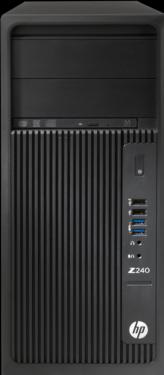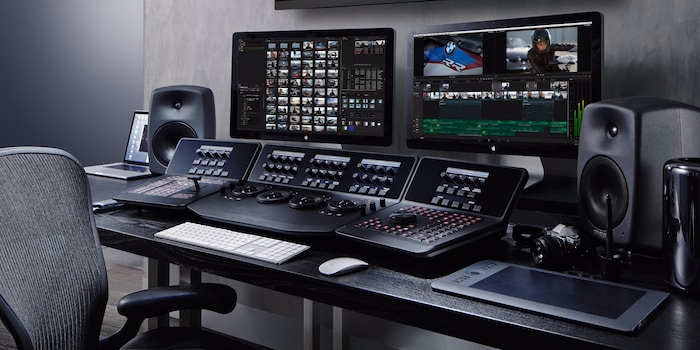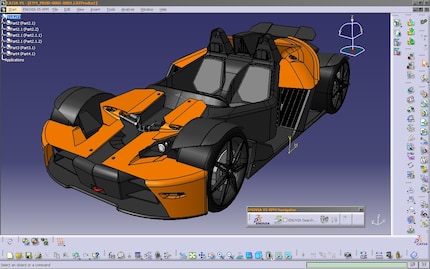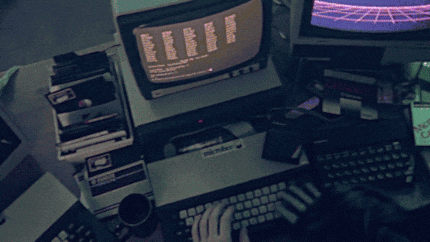

What is a workstation, what is it for and is it designed for gamers?
Although PCs are getting faster and faster, they never match the performance of workstations. But that's not always true. Read on to find out why and for whom these expensive machines are really worth the money.
What is a workstation?
In contrast to a PC, a workstation is purely and simply a working machine. Visually, the two devices look similar, although workstations tend to have a more sober design. They are mainly used by developers, analysts, designers or film-makers. In short: people who deal with large amounts of data or complex graphics applications. At the same time, workstations need to be significantly more reliable and durable.
For this reason, the best workstations are equipped with hardware not usually found in gamer or desktop PCs. Notably:
RAM ECC: RAM that recognises and corrects errors autonomously, before they compromise the system.
Processor: workstations generally rely on Intel Xeon processors, based on current generations of CPUs. They support multiple sockets, more RAM, more code-correcting memory, more cores and a larger cache in order to perform the tasks required.
Graphics card: here, AMD Radeon or Nvidia Geforce cards are obsolete. Workstations have very different graphics card requirements. To manipulate complex geometries of aircraft or buildings in CAD programs, for example, you need computing power that is not comparable to that required by games. Their pure computing power is not necessarily faster, but optimised for the important discipline of "double precision". For a game, the largest possible quantities of data need to be managed. For a static calculation carried out by a civil engineer, they need to be as correct as possible. With twice as many decimal places, calculation errors accumulate less quickly. This is why Nvidia Quadro, Tesla and other graphics cards are found in workstations. They take a considerable load off the processor.
RAID: a cluster of hard disks prevents the failure of one or more of the disks and the loss of data - so you can get on with your work unhindered. RAID levels 0, 1 and 5 are the most common. In the case of level 0, the disks are connected in series. This means that the connection is very fast, but not very secure: if one disk fails, all the data is lost. However, RAID 0 is still of interest when a maximum amount of data needs to be implemented and the data obtained regularly passes through a (slower) backup system. On the other hand, with RAID 1, the backup system is directly integrated. The disks are connected in parallel. So you always have to install twice as many disks as you really need. RAID 5 is a compromise: it is faster and more secure, but requires at least three hard disks. The capacity of the grouping ("array") is calculated according to the formula "(number of disks - 1) × capacity of the smallest disk".
Warranty: often, the warranty period is longer and you benefit from on-site maintenance, so that the professional comes directly to your home.
Redundant power supply: to reduce the risk of failure, workstations often have a power supply made up of several power supply units. These can stand in for each other in the event of a failure.
Ergonomics: in order to be able to replace parts quickly if necessary, the emphasis is on direct access without tools.
Cooling system: in order to guarantee 24-hour operation, workstations are generally equipped with a sufficient number of fans, helping to prevent excessive temperature.
Motherboard: here, every element is improved. There's room for more than one processor, RAM space of 16GB or more, multiple graphics card slots, dual Gigabit Ethernet ports, etc.
Motherboard: here, every element is improved.
Operating system: this is where we see the fewest differences. We often come across a Linux or Windows distribution. This is all about the Pro version, as it has additional business features. Windows 10 Home only supports a single CPU. Even macOS is suitable for workstations, see Mac Pro.
When and why do you need it
A workstation is a plus when you're dealing with complex projects, requiring analysis software, special effects or code compilations. You can use Photoshop, Final Cut Pro or Adobe After Effects on your usual PC or Mac, but as soon as projects get bigger, a workstation is more suitable. Unless you enjoy endless progress bars or program crashes. Workstations are often used in connection with servers or intensive rendering software, such as Autodesk Maya, Catia or Cinema 4D.

In the past, intensive computing operations were carried out on an external server. Today, it's often possible to do them locally on a normal PC. But if you don't feel like staring at the progress bar every time you make a small change, you need a workstation.

Is a workstation suitable for gamers too?
If your workstation is equipped with an Nvidia Quadro graphics card, you can absolutely use it for gaming. Technologies such as DirectX and PhysX are also supported by the Quadro series. Naturally, the Geforce series offers much better value for money. But if you've got access to a workstation and fancy a bit of gaming, don't hesitate.
What use requires what hardware?
The important thing about all hardware is that it is supported by the program being used. The fastest Xeon processor or the most expensive Quadro graphics card are useless if they can't be used correctly by the software. The same applies to the field of mass-market multi-core processors and games. If a game only supports two cores, a four-core processor won't deliver any performance gains. The software needs to be optimised, so that multiple cores share the work and can work in parallel.
The processor is particularly stressed during video encoding. The same applies to calculations with large amounts of data or when programmers have to compile code.
The processor is particularly hard-pressed when encoding video.

The larger cache on Xeon processors allows multiple computational processes to be managed simultaneously, avoiding bottlenecks. If, for example, you're processing 4K video content with a Xeon CPU and you're using a lot of RAM (how about 2TB?), you don't have to constantly wait for the image to redisplay with every change.
RAID is useful, for moving huge amounts of data quickly. SSD drives are ideal, and they also make encoding processes easier.
RAID is useful, for moving large amounts of data quickly.
The graphics card is useful for all sorts of video applications. In video and 3D programmes for real-time processing. Animated films, such as "Vice-versa", "Vaiana, the legend of the end of the world", and others. With a workstation, scenes can be played instantly or more quickly, whereas with a normal PC, the operation would take hours.
More RAM means more and faster processes. Computing operations are first loaded into RAM. The more RAM available, the faster processes can be processed. Without this, the result is waiting times, as processes are constantly moving back and forth. A simple example: browser tabs. If you have little RAM and lots of open tabs, it usually takes a while before a new tab is loaded. More RAM makes it possible to load several tabs simultaneously.
Why not just buy a gamer PC?
With the new generation Nvidia Titan, this is a perfectly legitimate question. It's significantly cheaper than a Quadro card and offers similar performance. But, with its Cuda architecture, the Quadro is no ordinary gamer graphics card. However, Nvidia has implemented a very restrictive business model, making it impossible for businesses to acquire a sufficient number of Titan X graphics cards, forcing them to turn to the expensive Quadro cards.
.
On the other hand, the CPU, RAM and graphics card in many gamer PCs are not designed to support the needs of specific graphics or computing programs.
Some advice
Entry-level
Mid-range
Upper mid-range
You may also be interested in these articles:
As a child, I wasn't allowed to have any consoles. It was only with the arrival of the family's 486 PC that the magical world of gaming opened up to me. Today, I'm overcompensating accordingly. Only a lack of time and money prevents me from trying out every game there is and decorating my shelf with rare retro consoles.
Interesting facts about products, behind-the-scenes looks at manufacturers and deep-dives on interesting people.
Show all





